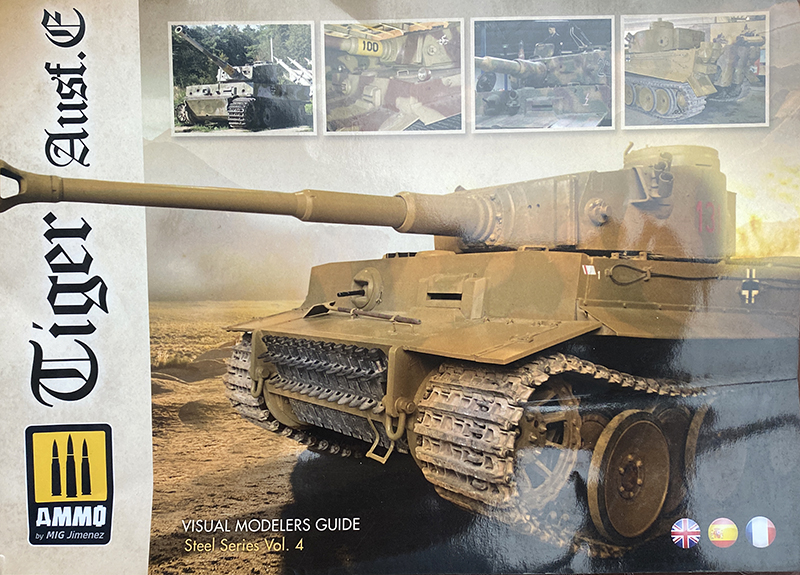Tiger Ausf.E – Visual Modelers Guide (Multilingual)
Steel Series Volume 4. A work entirely devoted to the iconic Sd.Kfz. 181 Tiger Ausf. E. Fun and easily referenced sourcebook where you can visually analyze and distinguish the main versions of the Tiger I, from the initial models to the final production variants. The introduction includes some historical notes about the design and development process of the vehicle. All of this with high-quality photographs that clearly show often overlooked external details features critical to both the King Tiger and scale modelers.
- Complete color guide with information about both the interior and exterior colors used.
- 16 fully detailed color profiles with camouflage and markings for all the versions.
- 80 pages, with more than 160 high-quality photographs including rarely seen details.
The book is broken into several sections:
- A brief introduction that also serves to explain the history and development of the Tiger project. A nice set of line drawings are included here, as well as at the beginning of each production tank; Early, Mid, & Late. Interestingly, it’s noted that each cost 250,000 Reichsmark (RM). One RM was worth around $2.50 in 1944, so each Tiger cost around $625,000.00 in 1942-1944. Adjusted for inflation, that’s $9,868,750.00 today. A modern M1 Abrams Main Battle Tank costs between 8 and 10 million. I’m not typically enthralled with economics, but this little tangent was fun to think about.
- Early production, which features “Tiger 131” of the Bovington Tank Museum. Easily the most famous tank on the planet, as it is the only surviving Tiger in running condition. 33 photos are included, all of which are external. There are no “top-down” shots. The hull, turret and running gear are examined.
- Mid Production features “Tiger 100” of Russia’s Kubinka Tank Museum. 51 photos are included, and seem to highlight the mantlet, attachment points, and air intakes.
- Late production includes the Lenino-Snegeri museums’ “Tiger 700”. What is essentially a derelict hull, this tank was found submerged in a swamp. It was utilized as a post-war target for armor-piercing shell testing, and, apparently discarded. 35 photos are featured, and a lot of focus is placed on the weld seams (which, interestingly, do not rust over time). Also shown here is Samur Tank Museums’ “Tiger 221”. 33 photos which tend to focus on the tanks’ zimmerit.
- A section of color plates depicting 11 RAL colors used on Tigers.
- 16 gorgeous color profiles of the Tiger I Ausf. E
- Finally, a two-page section of all available Rye Field Model Tiger kits and accessories.
- A brief Bio of the author.
While the book itself is a fantastic photojournalistic walkaround, I’m disappointed that there are no “top down” shots or interior shots. I can understand that the associated museum curators don’t want people scrambling over their pieces, particularly in Bovington. However, as the photos were for a professional book being produced by a legit, well-known company, I feel like some concession could have been made. A tall ladder would’ve easily solved the issue of taking photos of the tops. There is only one underside shot. With photo captions in English, Spanish, and French, information is kept to a minimum.
Regardless, this book makes a nice addition to a collectors’ library. I recommend it with the above caveats. My thanks and gratitude to Mig Jimenez and IPMS/USA for the review copy.










Comments
Add new comment
This site is protected by reCAPTCHA and the Google Privacy Policy and Terms of Service apply.
Similar Reviews